On Tuesday, November 2, 2021, eight volunteers gathered at the Marine Discovery Center to remove Brazilian peppertrees from the southwest corner of MDC property. The “tree busters” (Tom Emge, Ed Loomis, Dick Clement, Chris Nelson, Rebecca Moscatello, Mark Morgan, Nancy Morgan, and Susan Ori) were organized by Jessy Wayles, MDC’s Conservation Science Coordinator, to keep this invasive species in check. Brazilian peppertrees are closely related to poison ivy and poison oak; contact with the sap from the tree may result in an itchy allergic skin reaction or even respiratory problems, so volunteers were appropriately attired in closed-toed shoes, long pants, long sleeves, hats, and work gloves.
Volunteers surveyed the area along MDC’s western parking lot, noting two distinct outcroppings of peppertrees. The first location involved 300 feet of marsh shoreline along the sandbag wall next to the parking lot. Even though a volunteer team eradicated 98% of peppertrees in this area two years ago, 40 to 50 Brazilian peppertrees returned, ranging in height from 12 inches to 12 feet. Most trees were mid-range, about 3 to 6 feet tall. The second location, an overgrown water retention area just east of the parking lot, was cleared of peppertrees three years ago. About 40 trees had regrown in this area; they tended to be more entrenched, taller, and thicker, with deeper roots.
Brazilian peppertrees are nonnative to Florida and encroach upon nearly all terrestrial ecosystems in central and south Florida. Brazilian peppertrees overtake native plants and absorb nutrients needed by native species. It is on the Florida Noxious Weed List and is listed on the University of Florida’s Center for Aquatic and Invasive Plants as a Category 1 invasive. Rapid growth and a high germination rate make Brazilian peppertrees difficult to control or suppress. Law prohibits the sale or movement of this species and any cultivation, transplanting, or other promotion of proliferation should be avoided.
Tree busters came equipped to tackle this pervasive and prolific foe, armed with tree loppers, a chain saw, a canister of special herbicide (Garlon), and a willingness to dive into heavy underbrush, palmettos, sandspurs, and prickly plants. The group began by removing smaller trees, 1 to 2 feet high, pulling them out with roots intact. When possible, this is the best strategy, as it completely removes trees and eliminates new growth from remaining roots. The group attacked larger trees by lopping trunks as close to the root as possible. If the trunk was too big for a lopper, the chain saw started singing.
Once a tree buster lopped off or sawed down a tree, another volunteer was right there to spray on herbicide. Brazilian peppertrees have an ability to shut down or go dormant when cut, so herbicide has to be administered directly on the stump within 15 minutes of cutting.
Even though the area was cleared of peppertrees two or three years ago, some trees in the target area had regrown with trunks around 12 inches in diameter and heights over 12 feet. Volunteers scored stumps of the larger trees before applying the herbicide to allow for deeper saturation. Stumps that had been scored during the last eradication event showed no re-growth two years later.
Three volunteers used loppers, one operated the chain saw, and another ran behind with the herbicide sprayer; the debris pile grew quickly. Remaining volunteers picked up the limbs and branches, tossing them into the back of the MDC pickup truck. Volunteers worked for two hours and cut seven truckloads of Brazilian peppertrees. They hauled debris to a location accessible to a large trash truck. Jessy had previously made arrangements with the local waste company for a special pickup of peppertree debris; the waste company will recycle the debris as mulch.
This was the second eradication day coordinated this fall to eradicate Brazilian peppertrees from MDC property. Tree busting events are done in October and November for two reasons: 1) It’s finally cool enough to put on long pants and long sleeves for the tough task; and 2) Berries on the plant ripen in early December. Timing is important to get rid of Brazilian peppertrees before seeds ripen and are dispersed.
Birds and animals are attracted to the bright red, ripe berries; they eat the seeds and, after digestion, scatter them everywhere they go. Robins, cedar waxwings, mockingbirds, and catbirds love the berries, as do raccoons and opossum. The seeds are viable up to six months and have a 30 to 60% viability. Once a seedling has formed, the survival rate increases to 70 to 100%.
Tree busters enjoyed the multi-sensory experience. Volunteers had to visually locate and identify the plant, not always as easy as it sounds since peppertrees tend to grow under, around, or entwined with other plants. When cutting began, there was a distinctive turpentine-like smell in the air. The sound of chain saw in the morning was distinctive and the rustle of trees hauled from the brush noted progress. In addition to the physical exertion and constant motion involved, volunteers contended with the feel of dripping sweat and sticky sap. But all agreed the strongest sensation was the feeling of doing some good in the world by attacking and destroying a highly invasive and prolific plant.

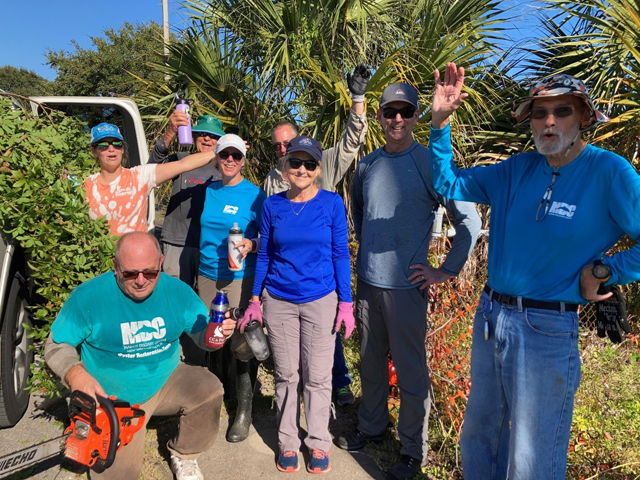
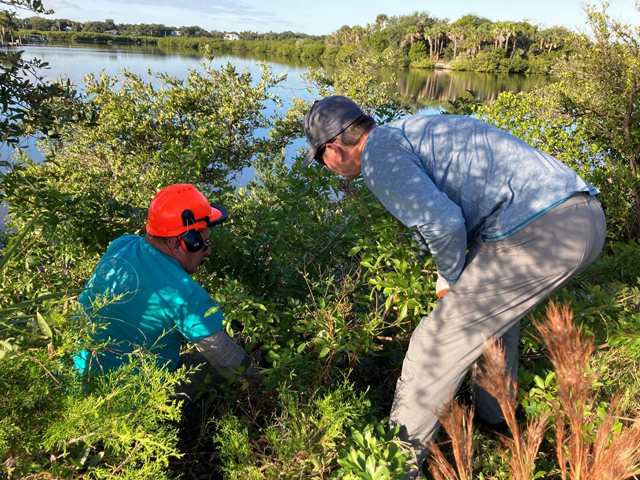
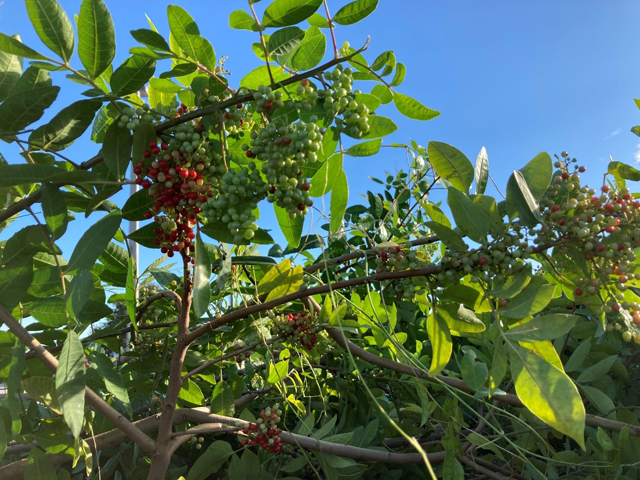
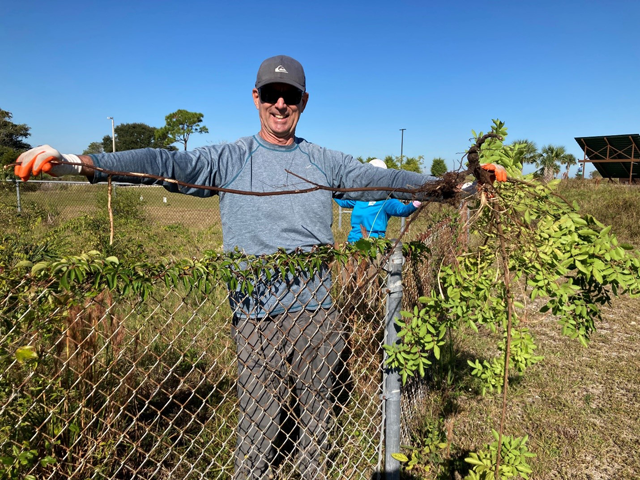
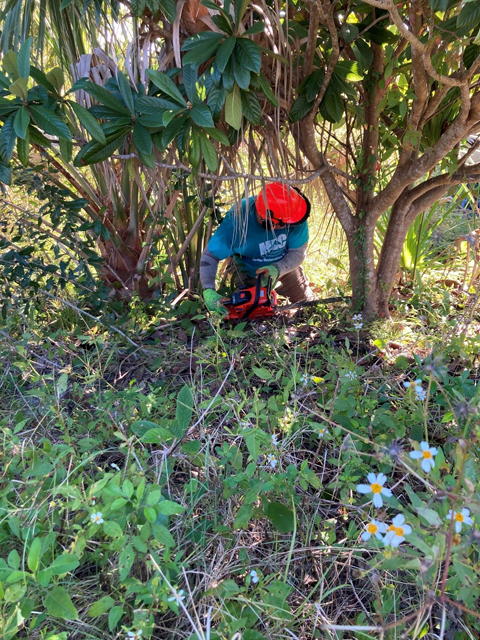
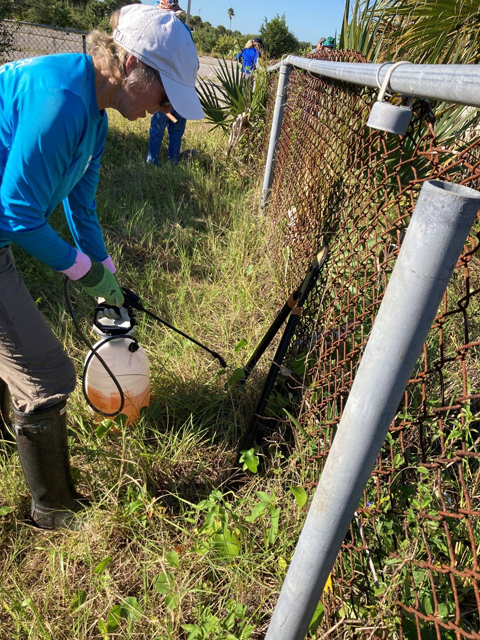
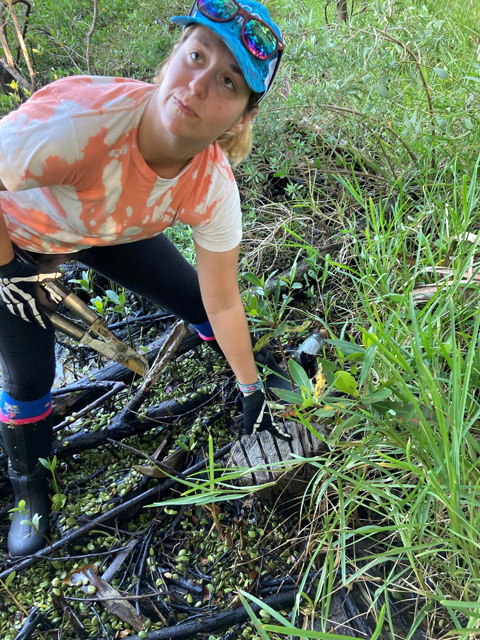
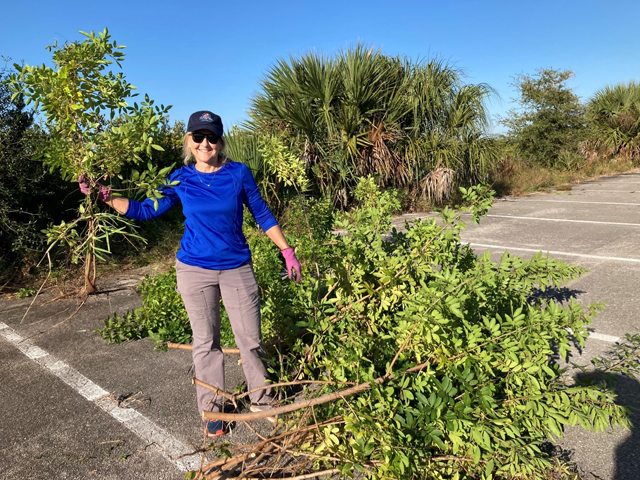
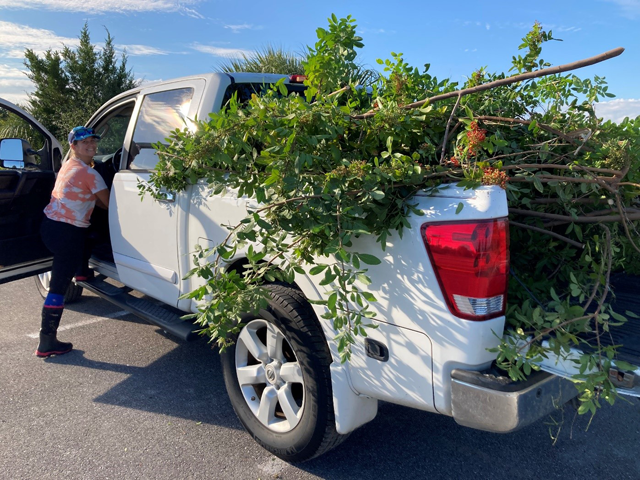
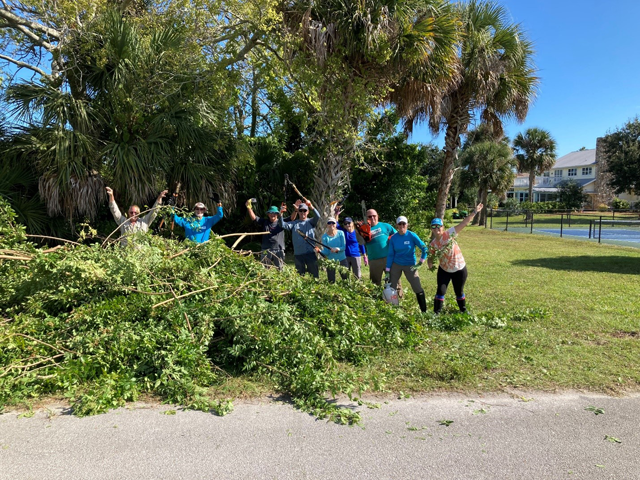

Follow Us!